The overall Kilimanjaro success rate is 70-80%.
This is across all routes. The actual chance of summit success varies hugely depending on the Kilimanjaro climbing route you choose.
See my breakdown below to help you choose the route with the highest Kilimanjaro success rate.
My Quick Takeaways:
Planning to climb Mount Kilimanjaro? Here's a brief overview of the Kilimanjaro summit success rates:
The overall success rate is approximately 70–80% of climbers reach the summit across all routes.
Impact of Route Duration:
- Shorter Routes (5 days): Success rates can be as low as 27%, primarily due to insufficient acclimatisation time.
- Longer Routes (7–8 days): Success rates increase significantly, reaching up to 85%, as extended itineraries allow better acclimatisation.
Route-Specific Success Rates:
Marangu Route:
- 5-day itinerary: Approximately 27% success rate.
- 6-day itinerary: Around 44% success rate.
Machame Route:
- 6-day itinerary: Approximately 44% success rate.
- 7-day itinerary: Around 64% success rate.
Lemosho Route:
- 7-day itinerary: Approximately 64% success rate.
- 8-day itinerary: Up to 85% success rate.
Factors Influencing Success:
- Acclimatisation: Longer routes provide more time for the body to adjust to altitude, reducing the risk of altitude sickness.
- Physical Preparation: Adequate training and fitness levels enhance the likelihood of a successful summit.
- Route Selection: Choosing a route that balances challenge and acclimatisation opportunities is crucial.
Opting for longer routes not only increases your chances of reaching the summit but also offers a safer and more enjoyable trekking experience.
Ready to lean even more about the Kilimanjaro success rates? Let's rock.
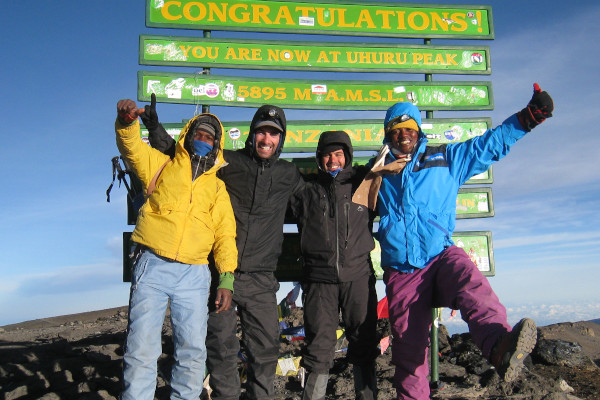
Plan your Kilimanjaro trek
Get a quote from my recommended local Kilimanjaro operator
Kilimanjaro Success Rate by Route
Machame Route Success Rate
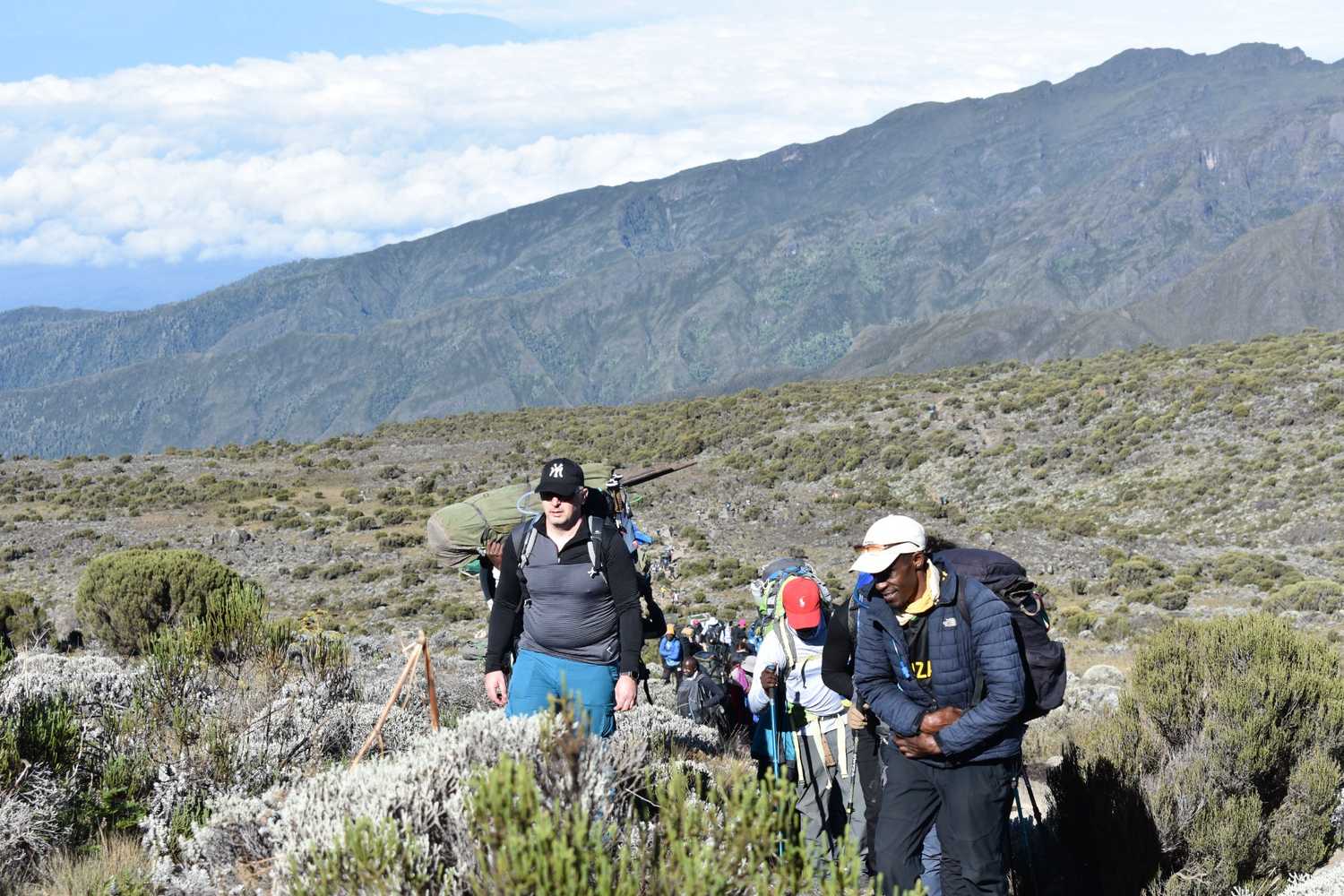
No Kilmanjaro route is 'easy' but the Machame 7-Day option offers short trekking distances and good opportunity for acclimatization.
The Machame route is probably the most popular route up Kilimanjaro with roughly 50% of all trekkers using it.
The route can be completed on a 6 or 7 day itinerary and the route provides a fantastic landscape and scenery.
Both the 6 day and 7 day routes have a great climb high, sleep low profile and summit success rate is high because of this, especially for climbers spending that extra day to acclimatise.
Based upon my interviews with several leading operators, the 7-day Machame has an average summit success rate in excess of 90% whilst the 6-day option has a 75% success rate on average.
Rongai Route Success Rate
The Rongai route is the only route that starts from the Northern side of the mountain. Like the Machame, it is offered on both a 6 day and 7 day itinerary.
However, unlike the Machame, the Rongai route does not offer a good climb high, sleep low profile which arguably makes this route more difficult. Therefore, spending an extra day on the mountain becomes even more valuable as the 6 day option is tough.
My recommended Kilimanjaro tour operators state that the 7 day itinerary has an 85% summit success rate whilst the 6 day route has a 70% success rate.
Lemosho Route Success Rate
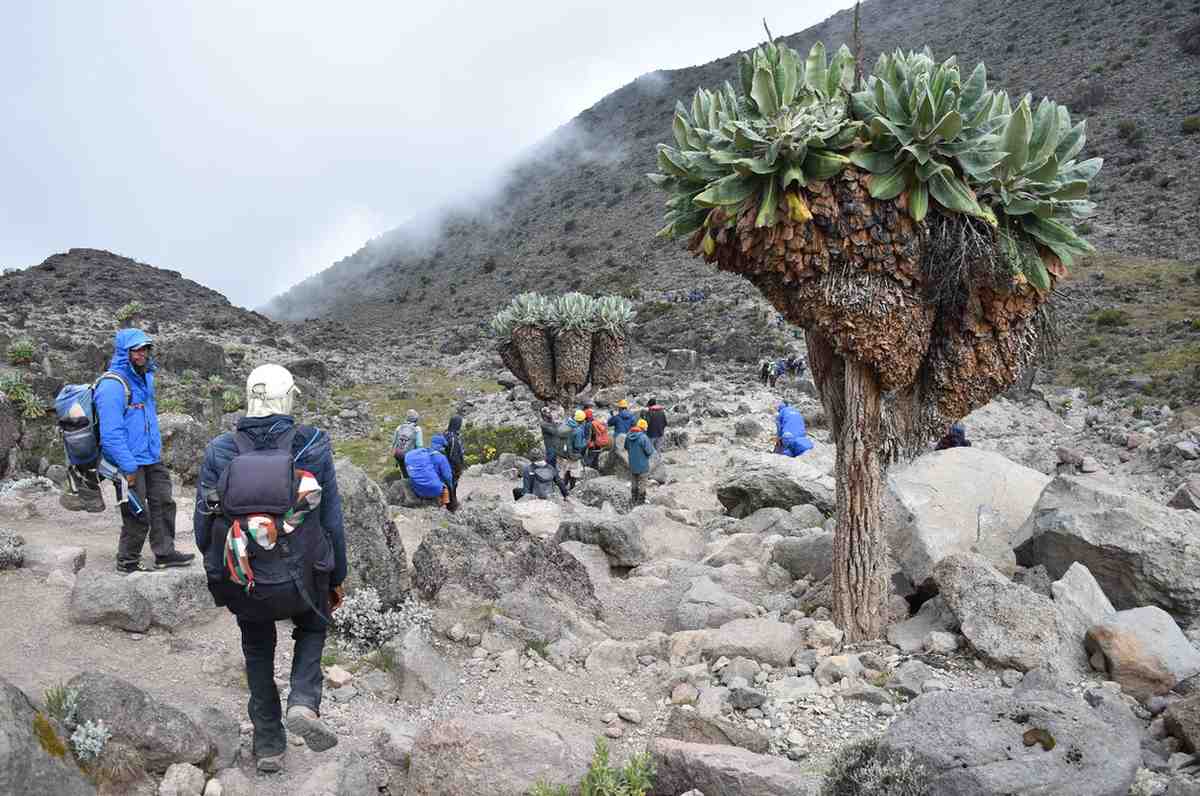
The Lemosho route has one of the highest summit success rates due to a good acclimatisation profile.
Probably my personal favourite, the Lemosho Route is fast becoming one of the most popular routes on Kilimanjaro.
The Lemosho route is a beautiful and remote trek that approaches the mountain from the south-west and joins the busier Machame route on day 4.
It is generally completed on a 7 or 8 day itinerary, however, some operators in an attempt to save money will offer it as a 6 day route.
Even though the route starts at a higher altitude than other routes, it offers great acclimatization and a really good climb high, sleep low profile.
Success rates are high on the Lemosho route – the 8 day option is usually around 90% and the 7 day around 85%. For the less popular 6 day option summit success rate is roughly 75%.

Plan your Kilimanjaro trek
Get a quote from my recommended local Kilimanjaro operator
Northern Circuit Success Rate
This is the newest route on the mountain and traverses all of the Northern Slopes on a circumnavigation of the mountain.
The Northern Circuit is also the longest route, taking 9 days.
Because of its length, it’s the safest and most successful route up Kilimanjaro with an average summit success rate of over 95%!
If you have the time and want to get off the standard busier routes, this is probably the best option for you.
Marangu Route Success Rate
The Marangu route is the oldest and most established route up Kilimanjaro. Its popularity stems from the fact that it is both the shortest route and also provides hut accommodation all the way up.
It is often considered to be the ‘easiest’ trekking route to the summit, however, almost every summit success rate statistic contradicts this as the rates are by far the lowest of any other route – often below 60%!
The reason of course is that the route is mainly taken on the short 5 day itinerary, which does not give climbers the chance they need to acclimatize properly.
The Marangu Route is a favourite among local operators as it’s a quick turnaround, with no camping gear needed.
I recommend taking the 6-day itinerary if you decide to use the Marangu route, as it has much better summit success rates than the 5-day option.
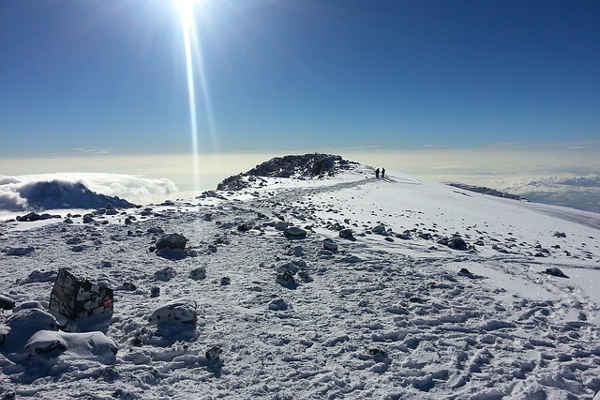
Climbing Mt Kilimanjaro Success Rate
For many, climbing Kilimanjaro is the experience of a lifetime.
It’s also a fairly big investment (see: cost to climb Kilimanjaro) and you, therefore, need to understand your chances of actually reaching the summit and which routes give you the best chance at doing that.
Almost all operators will tell you their ‘official’ summit success rate, however, this information can often be extremely misleading.
Here's why...

Plan your Kilimanjaro trek
Get a quote from my recommended local Kilimanjaro operator
Kilimanjaro Tour Operator Success Rates
The sad fact is that Kilimanjaro tour operators face an ethical dilemma.
Do they push their guides to take unnecessary risks to get clients to the top? Or do they keep their high safety standards and suffer a lower Mt Kilimanjaro summit success rate?
For any good operator, the answer is obviously the latter.
However, as I say, this does bring down summit success rate figures. Worse than this, some operators will simply make up their statistics.
How to increase your chance of Kilimanjaro summit success?
Whilst I cannot say for certain which operator has the highest summit success rates, I can say for sure what gives climbers the best chance at success – and that is a slow gradual ascent.
Statistics for summit success greatly improve when you spend longer on the mountain. The longer you give your body on the mountain, the more time it has to adapt and acclimatize to the altitude.
Essentially, the longer you spend trekking, the higher chance of success you have.
For example, acclimatising on Mt Meru before tackling Mount Kilimanjaro will increase your chance of summit success.
Route profile is also very important and all good operators will recommend routes that have a climb high, sleep low profile. This means trekking to the higher sections during the day and sleeping on the lower sections to give your body the opportunity it needs to acclimatise.
Low quality operators will simply rush you up the mountain on the shortest route possible.
See my guide to training and preparing for Kilimanjaro.

Plan your Kilimanjaro trek
Get a quote from my recommended local Kilimanjaro operator
Official Kilimanjaro success rate statistics
Except for old and outdated Kilimanjaro National Park Authority statistics, there are no official statistics surrounding Kilimanjaro climbs and summit success rates.
The statistics published by Kilimanjaro National Park Authority date from the early 2000s and are heavily skewed towards the short 5-day treks which have in recent years become much less popular as tourists have become better informed on the risks of altitude sickness on these short routes.
Below I have provided the summit success rate figures published by the Kilimanjaro National Park.
Please note, these figures are old and summit success rates are undoubtedly higher today as route profiles have improved and the number of hikers opting for the 5 day treks has plateaued.
- The overall success rate on Kilimanjaro is 65%
- On 5-day routes, the success rate is just 27% (Marangu, Umbwe)
- On 6-day routes, the success rate is 44% (Machame, Marangu, Rongai)
- On 7-day routes, the success rate is 64% (Machame, Lemosho, Rongai)
- On 8-day routes, the success rate is 85% (Lemosho, Northern Circuit)

Plan your Kilimanjaro trek
Get a quote from my recommended local Kilimanjaro operator
My Final Thoughts
And there you have it: A quick summary of the Kilimanjaro success rates. If you have any further questions about summit success rates on Mt Kilimanjaro, please just leave a reply below and I’ll get back to you as soon as possible.
References: 1. Interviews with operators, 2. Kilimanjaro National Park Stats

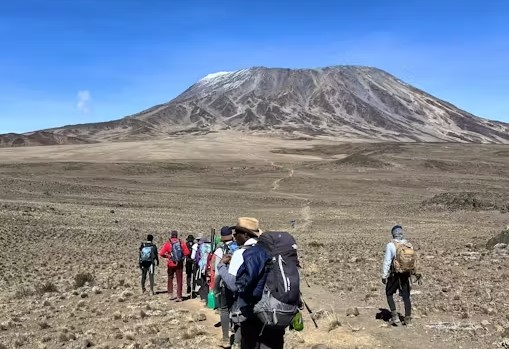
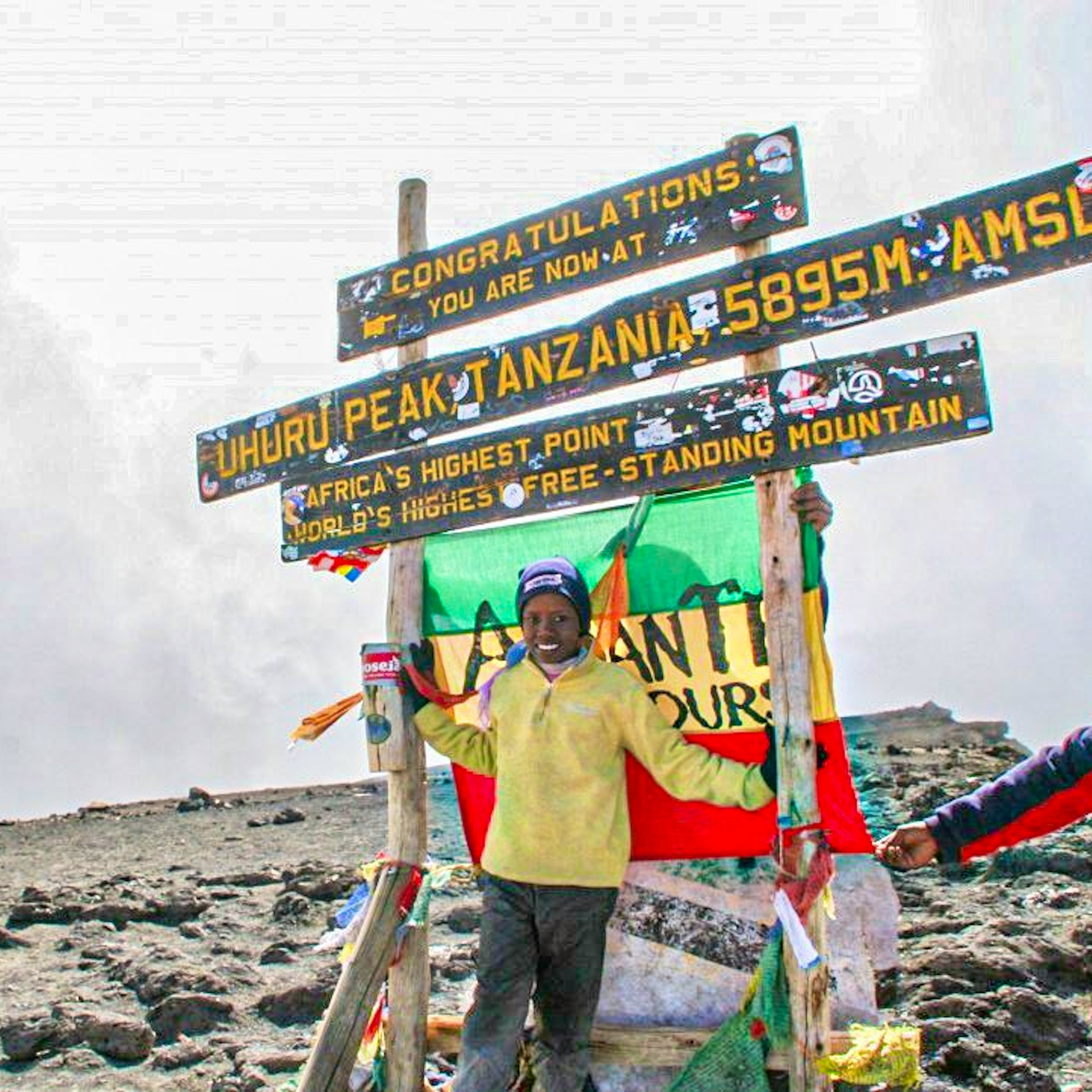
Hie how is the cost to climb the mountain per day. minimum charges
Here is a detailed breakdown of costs: https://www.climbkilimanjaroguide.com/climbing-kilimanjaro-cost/
What is the success rate for women of the world and especially for the women of color? Please let me know. Thanks.
Hi Deepika, unfortunately these statistics are not available, but I would assume summit success splits equally between men and women.
hi there. what are the odds for for a successful summit of Kilimanjaro at 70 + years old.
many thanks
barry
Hi Barry, difficult to say really, but if your fit and healthy I would say the odds are in your favour. Many 70 year olds and quite a few 80 year olds have summitted Kili.
Hi, I'm very physically fit, extensive mountaineering experience, prepared and resilient. What do you think my realistic chance of success on the Marangu route in July would be please? 5 days versus 6 days?
Hi John, on average the 6-day Marangu has a higher summit success rate than the 5-day option. If you take the 6-day route I would say you have an 80%+ chance of summiting.
How does rain affect the success rate of a climb? Are there any figures for this? I was planning a trek one to two weeks from now, but can easily instead delay this until December or January of next year, as I will return next winter.
Hi Thomas, you can find some detailed information on weather here: https://www.climbkilimanjaroguide.com/kilimanjaro-weather/. The rainy season runs from April to May. The rain generally only effects the lower slopes of the mountain, so summit success rates are usually not impacted.
Mark, I am considering the 8 day Lemosho route with REI and the 9 day Lemosho-Crater Camp Route with Wilderness Travel. I like the sound of the easier summit day with the Crater camp but have read about concerns with camping at such a high altitude. On the other hand the summit day starting at midnight with REI sounds very challenging as well. I am 54 and not an experienced climber. Do you have any recommendations. I have enjoyed reading your blog and appreciate in advance any insight you can provide. Thank you!
Hi Bill, almost all treks on Kilimanjaro push for the summit over night, as this is when the weather is often more stable and allows trekkers to top out around sunrise and then begin the big descent to Mweka Camp. The round trip from Barafu to the summit and back to Mweka can take upwards of 15 hours, with a stop for lunch on the way back. Hence an 23:00 o’clock start the day before allows one to get back down to Mweka at a reasonable time. The Crater Camp variation allows for a normal morning summit push as one doesn’t need to descend to a significantly lower camp. If you do decide to do the Crater Camp version just make sure that your itinerary builds in lots of time to acclimatise, as sleeping at 5,200m is a big ask after only 6 or 7 days on the mountain. The 9 day itinerary is usually sufficient to give enough time to properly acclimatise to the high altitude. All the best!
Thank you. The Crater Camp route I am considering is an 11 day route with a camp at the Lower Tower camp, Lower Glacier camp and then the Crater camp. Do you believe this route would have a better success rate than the 8 day Lemosho route? Thanks again.
Hi Bill, in general a longer route profile provides more time to acclimatise so yes, I would say the 11 day route that includes Crater Camp is a good shout in terms of summit success. The issue is after summiting, most trekkers descend over 2,500m to a lower camp, whereas, Crater Camps hikes include another night at really high altitude. But as I said I think you should be well acclimatised by then. Hope this helps!
Are there longer options? For example 8 days on Lemosho trail to get to top and then however long it takes to descend?
Regards Chris.
Hi Christopher, there is a 9 day Lemosho (7/8 to top, 1/2 down) or even a 10 day Northern Circuit (https://www.climbkilimanjaroguide.com/northern-circuit/). Not many tour operators offer these as open groups though, so if you wanted to do a longer version you would need to go private.
In your experience, what is the success rate of Marangu 6 day (5 up, 1 down)?
Hi Mike, I don’t have official statistics on this but I would estimate it is somewhere between 70-80%.
I’m trying to discover if there is a record of people that successfully climbed Kilimanjaro in November 1961. The only record that I am aware of is an old fashioned fuse box with a notepad inside where we wrote our details, I was in the army at the time.
Regards R. S Wood
Please can you send me the paper or a link which has the printed summit rate statistics for Kilimanjaro from the Kilimanjaro National Park authorities from 2006? I’ve searched for this information but can’t find this so I’m wondering on how you obtained these statistics from the Park Authorities? Thank you
Hi mark. My 15 year old daughter has just returned from summitting kilimanjaro. She has brittle bone & we were wondering if you are aware of any others with brittle bone climbing kilimanjaro. We are aware of a 27 year American but cannot find any other details.
Hi Gail, I am not aware of this problem. I think it is best you contact a doctor for professional advice, but in my experience I haven’t heard of altitude resulting in brittle bone problems.
Hi! Thanks for Your Informative Website.
I did not see any stats for the Umbwe Route I just completed it in 6 days. Do you have any data for Umbwe?
I was told this is one of the most difficult. We did it in 6. I did fairly well with the acclimitization and only felt headaches and nausea on days 5-6. The hardest parts were the Barranco Wall on day 4 and the summit took a very long time due to the high amount of snow (it slowed us down a bit). The descent from Uhuru to Barafu was treacherous without spikes on our feet to prevent slipping on the ice. We slipped a lot and even broke trekking poles.
Do you have any stats for the number of peopel annually who reach the Kilimanjaro summit, or even an average daily number? Im very curious. I assume about 50 or so people may have summited when I did (June 15th).
Can you help?
Nita
Hi Nita, summit success rates are notoriously difficult to estimate as data is not publicly available. My best estimate is around 70-80% on 7 day routes or longer. Perhaps around 60-70% on the 5 and 6 day routes. The Umbwe via the Western Breach is the most challenging route on Kilimanjaro. All the best!
how many people made it to the top
Not sure what your question is Josh. About 30,000 people try climb Kilimanjaro every year, and I would estimate about 60-70% make it to the summit.
Hi, I’m planning to summit Kilimanjaro between last week of OCT’18 or first week of NOV’18.
I’m preferring Machame route. I know it is short rain season, but unfortunately I have vacation only on those days. What is your suggest.
Hi, this is just the beginning of the short rainy season so you may be just fine. It is very hard to predict the weather so far ahead of the time. I would say, prepare for rain on the lower reaches and quite a bit of cloud cover higher up, but hopefully you get lucky!
Hi. I’m trying to find a tour operator that provides a daylight summit tour. Can you advise of any that you know of?
Many thanks, Danie.
Hi Danie, most operators do not offer a daylight summit schedule as it often means remaining at one of the higher camps for another night. The main exception are operators who offer Crater Camp. On this schedule you set off from base camp in the morning (around 07:00, to summit around lunch time) and then descend into Crater Camp (5,700m) for the night, before continuing down the mountain. This route carries a lot more altitude sickness as sleeping at 5700m is no easy feat. The reason why operators generally only offer midnight summit schedules is to give trekkers enough time to ascent to the summit and then descent to the lowest camp on the mountain (in total this can be a 12-14 hour ascent and descent, hence the early midnight start). Hope this helps!
Hi Mark. Thanks for spending your valuable time helping newbies like myself.
I’m fifty, was a smoker for thirty years but quit three years ago. I’m planning my dream vacation for August 2018 and have always wanted to climb kill. I’m not a trekkers or hiker but I think I’m fairly fit. I have however suffered from mild emphysema. Is this a horrible idea? I’m considering “a taste of kili” four day hike. Do you have any recommendations.? I really want to summit but i hste to fail.
Hi Peter, Thanks for getting in touch and glad you are finding the site useful. In terms of whether you should attempt Kilimanjaro given your medical condition, I’m unfortunately unequipped to give you an answer. I will say that people with various respiratory conditions have successfully climbed before and I personally know some high altitude climbers who also smoke whilst a altitude (something that I find unimaginable). I recommend you consult your GP before making any decisions, he / she should be best able to advice you of the risks given your condition. I haven’t heard of the ‘Taste of Kilimanjaro’ hike, but I assume this takes one on the Southern Circuit but doesn’t push for the summit. If so this might be a good idea, but it sounds like you are more driven to go for the summit. If you do decided to hike Kilimanjaro I recommend going for one of the longer routes, like the 8-day Lemosho, as this provides a lot more time to acclimatise, and hence summit success rates are higher. Hope this helps!
Hi
I attempted to do base camp a few years back but was turned around at about 49oo meters because of altitude sickness.
Would you say in your experience that I would be unlikely to make the summit as I have read that it might be an issue again with the altitude sickness
Hi Aaron, there is some evidence that those who have suffered severe altitude sickness in the past are more susceptible to the illness if they go up to high altitude again, but the evidence is tenuous. From my experience there is very little rime or reason why some people suffer and others don’t, assuming that everyone has taken the same time and expended similar effort to reach high altitude. I have hiked and climbed with many people who have suffered altitude sickness on one expedition, but equally been fine on the next. My advice would be to take one of the longer routes, 8-day Lemosho for example, and follow all the best practice to acclimatise as best you can, see here: https://www.climbkilimanjaroguide.com/acclimatization-kilimanjaro/
Good day!
10 of us are planning Mt Kilimanjoro trek in July this year. Can you please advise the less challenges route to the peak. We prefer acclimatising extra days.
Hi Anitha, I recommend the 7 day Machame or 8 day Lemosho, both provide extra acclimatisation days and have a good route profile for summit success. All the best!
Hi there
I intend on doing the below trek. My concern is how short the trip is? Do you think this is enough time to acclimatize? Or does this seem short to you?
https://www.alzheimers.org.uk/download/downloads/id/3382/mount_kilimanjaro_new_years_eve_trek_itinerary.pdf
Hi Stephanie, the itinerary you are looking at is the 6 day Machame. This is a popular route option and many people follow the 6 day variation. The 7 day is definitely better from an acclimatisation perspective and thus summit success rates are higher, but if you are stretched for time then it isn’t a bad option as it still have a climb high, sleep low profile that aids acclimatisation. All the best!
I am doing killi with my 16 year old daughter and wife. We are taking the 8 days lemosho route. I am also considering the Northern route in 8 days, as from all the blogs I have read, I am assuming the summit day from school hut is easier than all the other summit climbs .The climb is supposed to be shorter by 2 hrs. is this true? If this is not true , i will go with the lemosho route as it is shorter and I have only 8 days.
Thanks in advance.
I suffer claudication can walk 100m then rest 10 mins then good to go for 100m could I reach the summit
I would say you would really struggle to summit Kilimanjaro, but nothing is impossible. If you do decide to look at the challenge more seriously than I would definitely first get clearance from your doctor. All the best!
I found some fabulously looking day hikes on Kilimanjaro. That might be an option
I’m doing Kili in couple months I have left side Hemiplegia I have two extra guides. Any advice for breakfast wall? I’m pretty confident though since I have extra support.
By way cheers for confidence on meru post!!!
Hi Andy, One step at a time, use all four limbs and make sure of your footing. You will do great!
Hi, I booked a 6 day Lemosho route climb and only realized later that a 7 or 8 day climb would be better , I am a little worried about acclimatizing. Do you have any suggestions? It would cost me a lot of money to change flights now
Hi Nirav, As you have already booked I wouldn’t change your plans. The 6-day is a challenge, but its entirely doable. Make sure to follow my best practice acclimatisation tips: https://www.climbkilimanjaroguide.com/acclimatization-kilimanjaro/
When you say 6/7 day routes this does refer to only going up or is it 6/7 days to reach the summit and return?
Thanks
Hi Steven, There are a number of 6 and 7 day route itineraries on Kilimanjaro that encompass the whole trek (up and down). The Lemosho and Northern Circuit have longer route variations (8 and 9 day options).